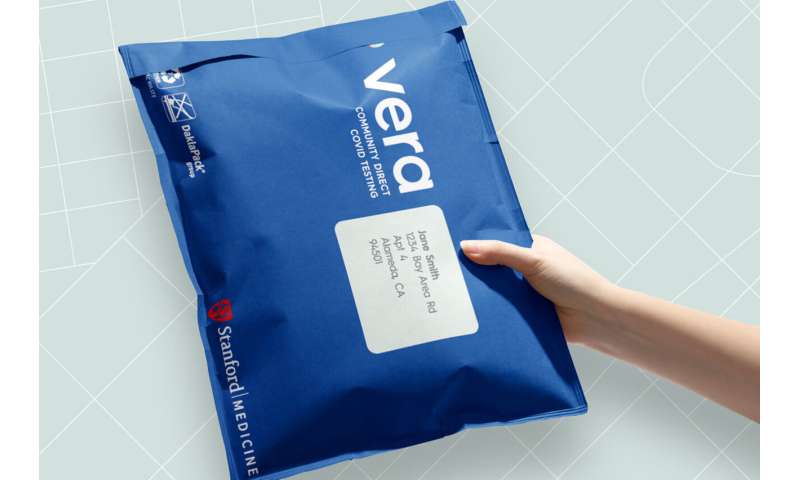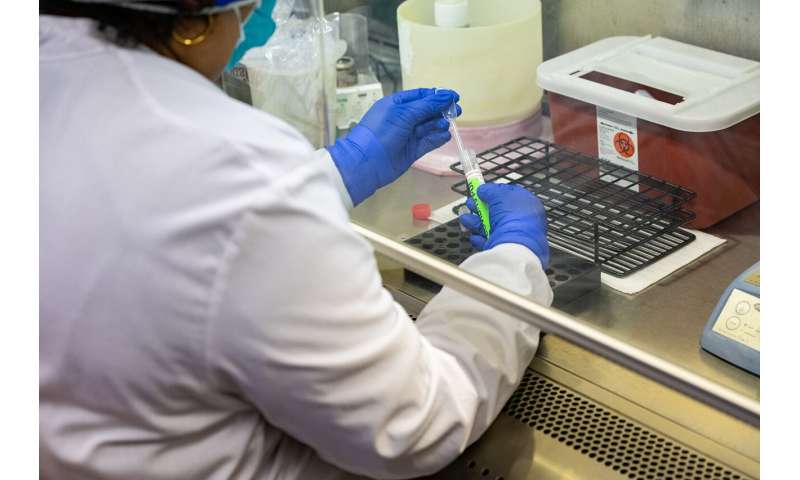
Stanford University along with the Chan Zuckerberg Biohub and a group of collaborators have created a low-cost system to collect samples for COVID-19 testing and monitor populations for the disease.
The technology, known as Vera, is a ready-to-use software and testing platform that enables virtually any organization—from universities to public health departments—to create their own broad testing and surveillance programs. These programs could help protect schools and vulnerable communities by enabling testing for individuals at scale.
Vera was created as part of a public-private partnership between Stanford and several other institutions, including the CZ Biohub and Microsoft. It was designed as an expanded testing platform that’s nationally scalable, rapidly deployable and more affordable than other current options. In the hope that the platform can aid in the effort to reopen schools, workplaces and communities more broadly, Stanford intends to make it available, under noncommercial terms, to academic institutions, public health departments, laboratory providers and other organizations interested in offering expansive testing.
Institutions wanting more information can visit vera.stanford.edu.
“The launch of this platform is a prime example of how Stanford University and industry partners can come together to help during this unprecedented time,” said Jeff Raikes, chair of the Stanford University Board of Trustees. “Collaborations like this are critical to addressing the challenges and complexities of the COVID-19 world.”
“Since the early days of this pandemic, Stanford has recognized how crucial testing is, and will continue to be, as we navigate the COVID-19 crisis,” said Lloyd Minor, MD, dean of the Stanford School of Medicine. “The Vera platform is a step forward in our goal to support widespread testing to individuals not just in our community, but throughout the country.”
Vera integrates several components, including a customizable enrollment system; a self-swabbing kit, which requires users to swipe only the inside of their nostrils, rather than have the back of their upper throats swabbed (which has to be done through the nose); and a secure user portal that delivers results and options to follow up with a health-care professional. The platform also supports a variety of self-testing technologies, laboratory providers and user enrollment and survey tools.
“This platform exemplifies how we can bring scaled testing to communities and industries across the country and leverage that as a tool to start thinking about how we can safely and affordably reopen,” said Stephen Quake, DPhil, the Lee Otterson Professor in the School of Engineering at Stanford and co-president of the CZ Biohub. “It’s a terrific collaborative effort, and it owes a lot to the pioneering work on the ‘swab and send’ home testing model done by the University of Washington’s Brotman Baty Institute.”
With Vera, Stanford and others aim to increase software utilization and testing capacity for COVID-19 at a local, state and national level. The idea is to imbue academic institutions with the ability to protect their local community and create programs that can answer impactful research questions. Notably, Vera is designed not only for the current pandemic but for future public health crises that require widespread testing and surveillance.

Toward reopening
In the pilot use of Vera, Stanford School of Medicine scientists are harnessing the platform for a new population health study that aims to facilitate widespread testing in the San Francisco Bay Area. Vera enables qualified study participants to order a test kit online, have it shipped directly to their home and then send their sample back for analysis. The Stanford Clinical Virology Laboratory will provide high-throughput testing.
The study, called the Community Alliance to Test Coronavirus at Home, or CATCH, is led by Yvonne Maldonado, MD, professor of pediatric infectious diseases and of health research and policy; Quake; and Lorene Nelson, Ph.D., associate professor of health research and policy.
“The initial goal is to have thousands of people in the Bay Area order and collect their own specimens, then send them to labs that can perform the actual test,” Maldonado said.
This approach to case surveillance could provide better insight into the split between symptomatic and asymptomatic cases and help researchers understand how the disease spreads within households and in communities. Maldonado, Quake, Nelson and the CATCH team have launched the study as a pilot project, but they hope to eventually have the program running across the country.
Vera program leader and CATCH study director Patrick Arensdorf noted that one of the key aims of the platform is to address inequities in testing by reaching underserved populations that are at greatest risk for SARS-CoV-2 infection. “These individuals often work in essential occupations and have difficulty accessing health care facility-based testing. Vera provides them a convenient and rapid home-based testing option,” he said.
Source: Read Full Article